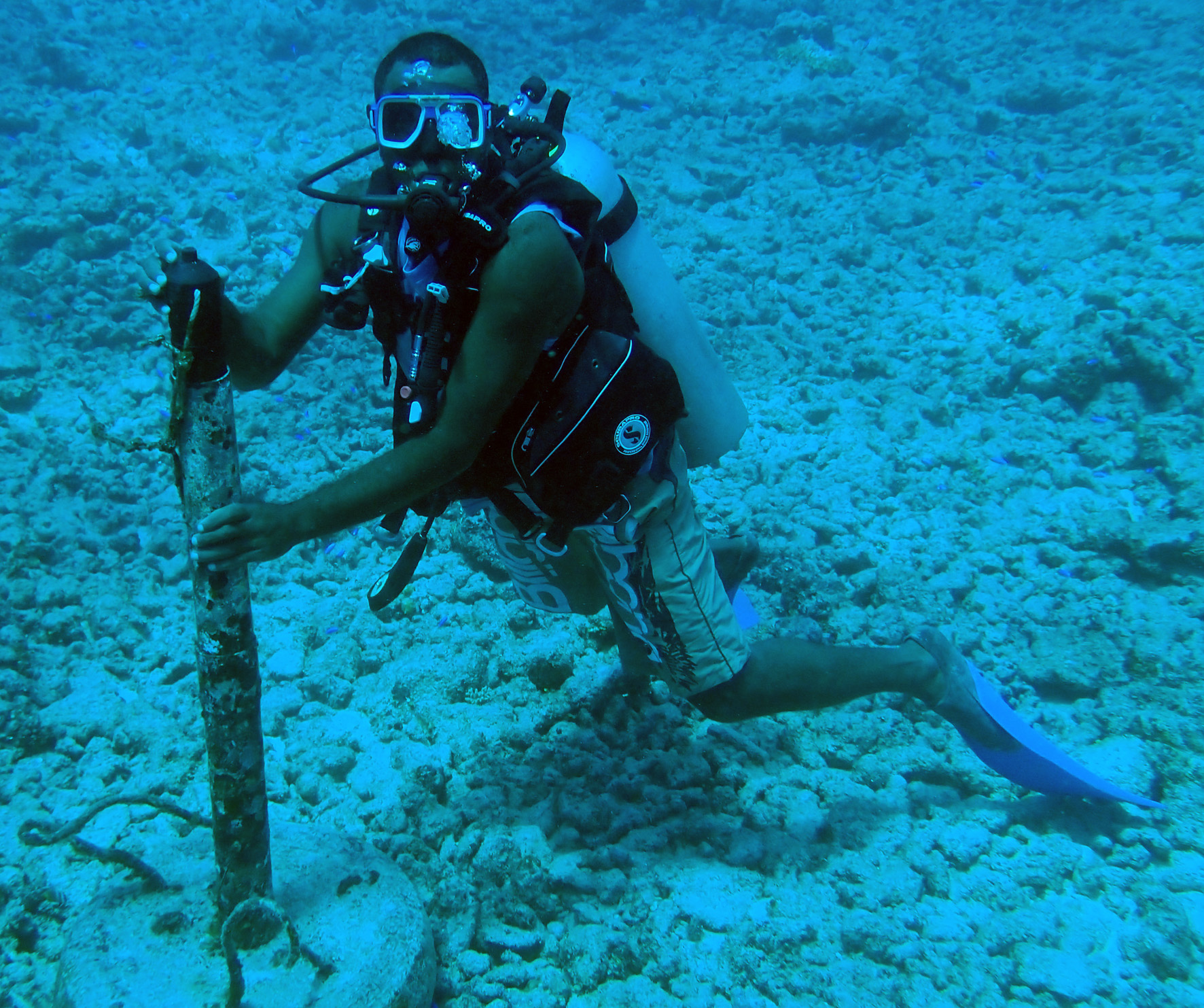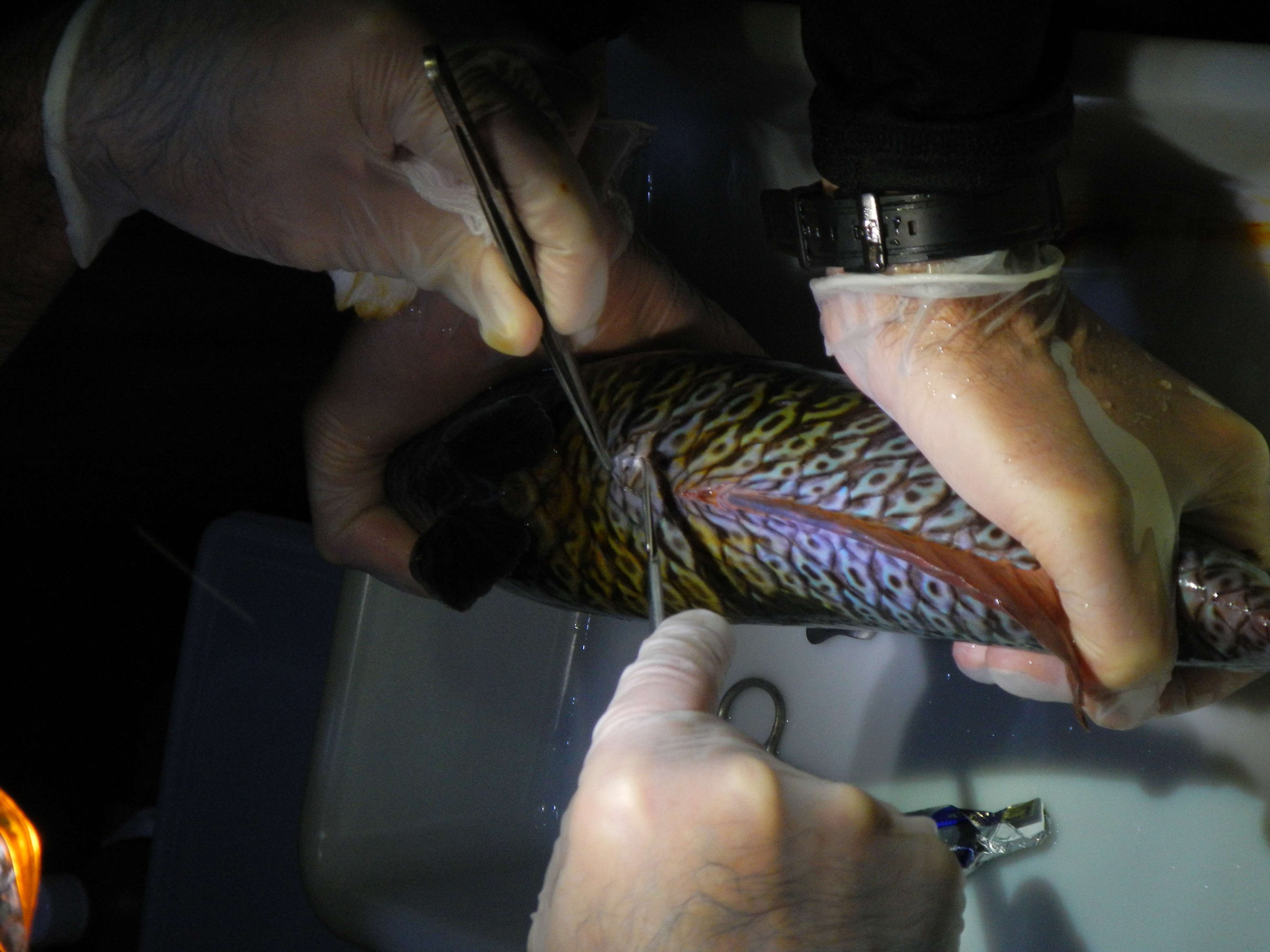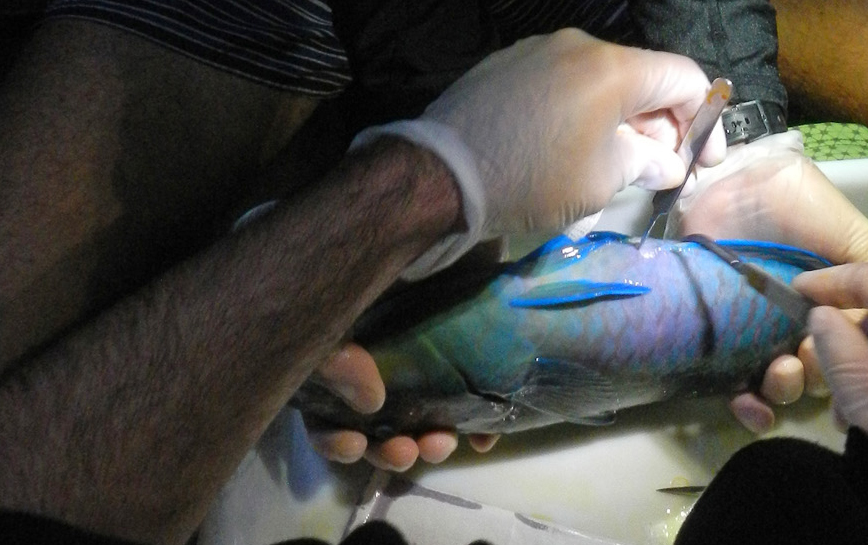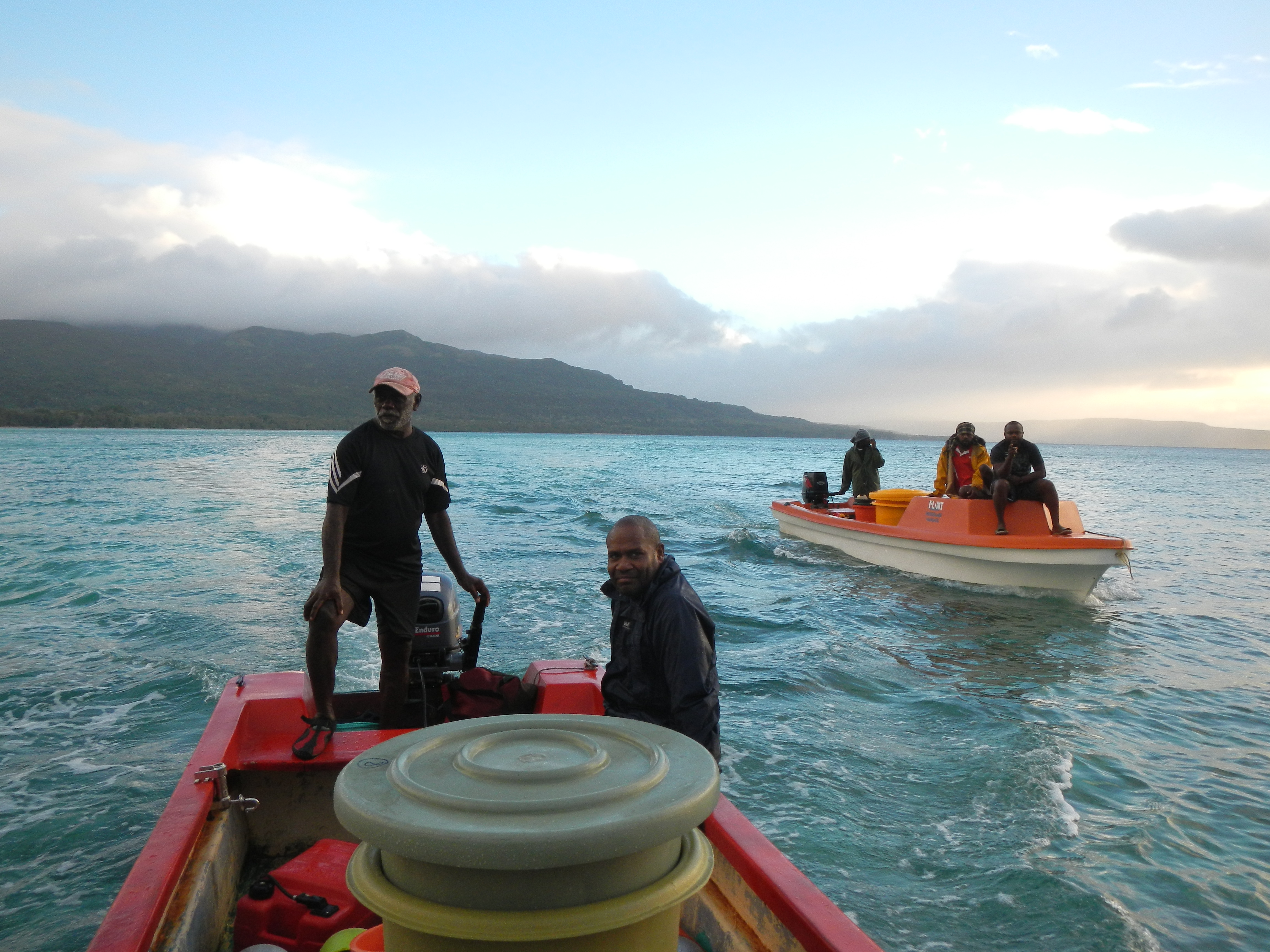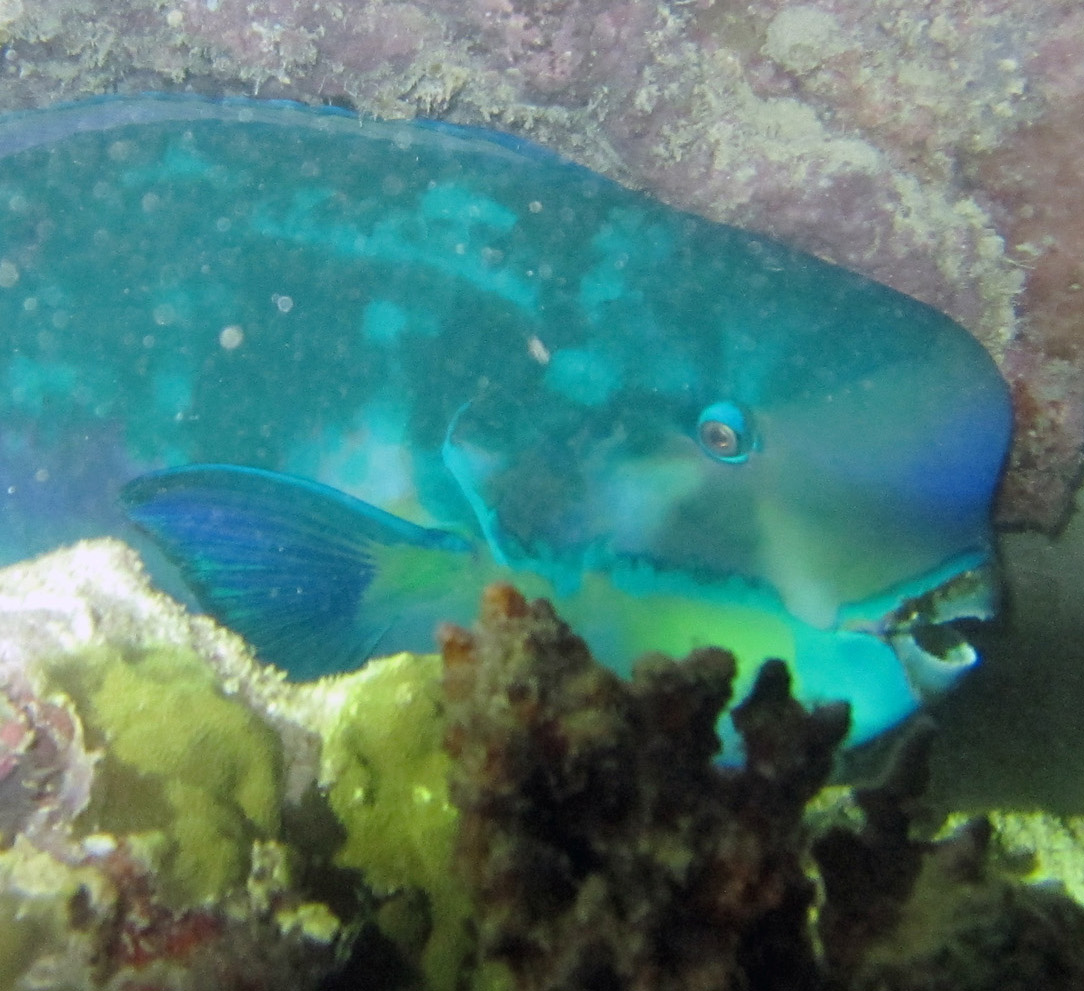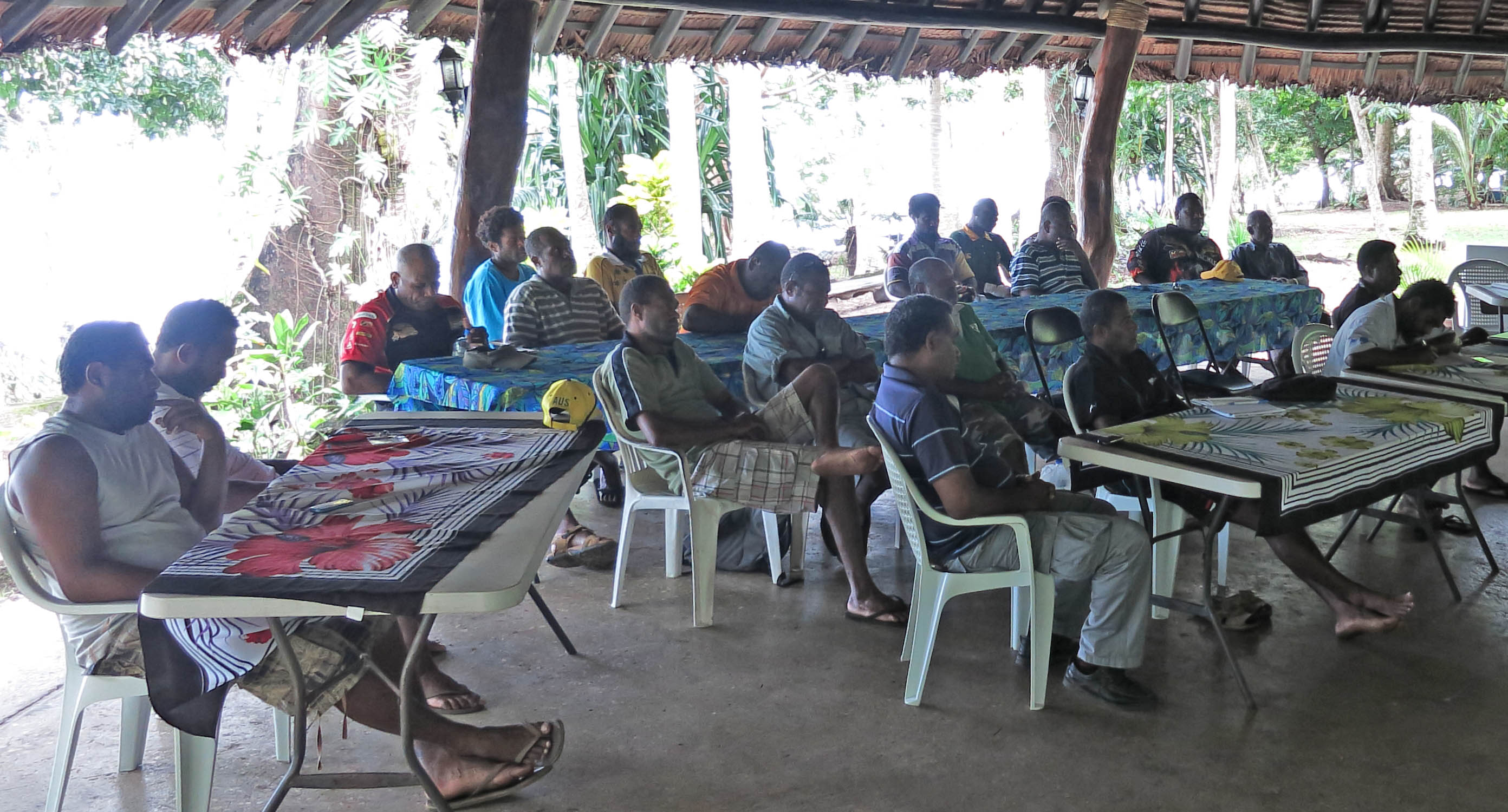« Efficacité des réserves marines communautaires au Vanuatu »
« Effectiveness of community fishery reserves in Vanuatu »
2010-2014, 94 000 €
Partenaires : IRD, Ministère chargé des pêches au Vanuatu, Aquarium des lagons de Nouvelle-Calédonie
CONTEXT
In Vanuatu, fishing for sale and/or subsistence has severely affected live stocks of reef mollusks that are likely close to collapse in many locations despite suitable reef habitats. Fishing pressure has also increased on reef finfish resources in some islands (e.g., Efaté island) due to the development of urban markets and network infrastructures.
As a result the country has experienced a striking upsurge in small-scale initiatives to protect reef invertebrate and fish resources since the early 1990s, in particular trochus (Trochus niloticus), giant clams (Tridacna spp.), green snail (Turbo marmoratus) and sea cucumbers (e.g. Amos 1991, 1995; Johannes 1998; Jimmy 1995; Jimmy & Amos 2004). One of the most common community-based actions consists in establishing small marine reserves for invertebrate and finfish species with temporary openings (Johannes 2002; Johannes & Hickey 2004). These tabu areas are characterized by small size (typically 0.1 to 1 km²) and very diverse, village-specific management rules in terms of species, duration, and harvest conditions.
Nevertheless available studies reported contradictory effects of community fishery reserves on marine resources according to their characteristics (e.g., size, duration, harvest rules). Specifically given their small size, their ability to protect resources likely depends on the movement capacity of target species. For instance sedentary species are expected to be more effectively protected within small reserves than highly mobile species.
In this research, we explored management perspectives for designing effective individual community fishery reserves and reserve networks according to space use patterns of target resources and marine tenure.
Amos, M. (1991) Trochus reseeding experiment in Vanuatu. 23th Regional technical meeting on fisheries. South Pacific Commission, 14 pp., Noumea.
Amos, M. (1995) Combination of fisheries management regulation, traditionally based management and wild stock enhancement using hatchery reared trochus juveniles as a precautionary management principle for Trochus niloticus resources in Vanuatu. 23th Regional technical meeting on fisheries. South Pacific Commission, Noumea, 10 pp.
Jimmy, R. (1995) Case study: the application of traditional management to the trochus fishery in Vanuatu. SPC Trochus Information Bulletin 4: 29-30.
Jimmy, R. & Amos, M. (2004) Vanuatu’s progress report on the integration of broodstock replenishment with community-based management to restore trochus fisheries: an ACIAR-funded project. SPC Trochus Information Bulletin 11: 13-14.
Johannes, R.E. (1998) Government-Supported, Village-Based Management of Marine Resources in Vanuatu. Ocean & Coastal Management 40(2-3): 165-186.
Johannes RE (2002) The renaissance of community-based marine resource management in Oceania. Annual Review of Ecology and Systematics 33:317-340
Johannes, R.E. & Hickey, F.R. (2004) Evolution of village-based marine resource management in Vanuatu between l993 and 2001. UNESCO Coastal region and small island papers, 15: 1-49.
RESEARCH OBJECTIVES
In response to Vanuatu Fisheries Department’s research and management objectives, the EFITAV action-research program aimed to strengthening marine resource management initiatives in Vanuatu. Specifically the objectives were to assess the effects of small community-managed fishery reserves on reef fish and invertebrate resources according to movement ecology of these species, and to strengthen management capacities of coastal communities and Vanuatu Fisheries Department’s officers. This action-research program involved reef fish and invertebrate resources during two phases (2010-2012 and 2013-2014).
Invertebrate resources
Comparative invertebrate stock assessment surveys of main target species in Vanuatu (trochus Tectus niloticus, giant clams Tridacna sp. and Hippopus sp., and green snail Turbo marmoratus) were carried out inside vs. outside community fishery reserves in several villages in Efaté, Emao and Aneityum Islands. The abundance was estimated through participative underwater visual census methods. Additionally movements of adult trochus were investigated in two fishery reserves. Field surveys involved experienced scientists from the IRD and the Department of Fisheries and local monitors. Random stratified sampling was used through GIS habitat layers derived from very high-resolution satellite imagery (Quickbird and WorldView2).
Results emphasized strong depletion of trochus and green snail resources in open areas at all project sites including risk of local extinction due to “Allee effect". Abundance, density and biomass of trochus, green snails and giant clams showed clear, significant increase within fishery reserves compared to neighbor open reef areas due to natural recovery and/or translocation by local fishers. Indeed trochus home range analysis revealed strong site fidelity within <100m-wide reef areas. Despite their limited linear dimension, most fishery reserves in Vanuatu are therefore likely to provide effective protection to adult trochus, including for reseeding programs.
Despite these positive results, effectiveness of fishery reserves in the long term depends on their ability to support significant population increase at large scale, i.e. beyond reserve boundaries. It was therefore recommended generalizing the use of community fishery reserves for trochus fisheries at the country scale through national fishing regulations (cf. a 10-year national moratorium was already established on green snail fishery in 2009). Short openings and controlled harvest may eventually be allowed for particular sites when resources recover.
Finfish resources
The movements of six fish species (Lethrinus harak, Naso unicornis, Scarus altipinnis, Scarus ocellatus, Cetoscarus microrhinos and Scarus oviceps) were studied within and outside community fishery reserves in Efaté Island. Overall 98 fishes were equipped with acoustic transmitters and passively tracked for several months using an array of underwater receivers. When there was sufficient data (for about 50% of the fish), home range was usually estimated between 100 m and 2300 m, although some fish performed occasional trips over several km. Different behavior types were observed according to home range size. The estimated parameters (home range linear extent, frequency and duration of excursions) showed no significant differences between species. Observations suggested that home range size increases with fish length for some species, however this relationship was not invariable.
The results suggest that small shoreline-bounded fishery reserves are able to protect sedentary reef fishes. Although this positive effect may be perceived by communities, this protection would benefit only to a small part of fish resources. We therefore recommend protecting reef areas extending over at least 1000 m in appropriate reef habitats to account for high variability of reef fish behavior, and to provide sufficient protection to most of fish resources, especially large individuals.
Our results also suggest to design fishing restrictions beyond village boundaries, e.g. reserve networks. Indeed the inherent limitations of community-based management approaches in Vanuatu islands shall be recognized, particularly in the more populated islands where distances between villages are small. In the latter context, community efforts may be directed to other management measures to better control fishing pressure. Between-village management agreements and the implementation of national regulations concerning reef finfish (e.g. mesh sizes of gillnets) would be required.
CAPACITY BUILDING & PARTICIPATIVE MONITORING
One of the objectives of the program was therefore to strengthen the capacities of the VFD for collecting and analyzing biological data on reef habitats and invertebrate resources. Two complementary training workshops were held at VFD office in Port-Vila in 2011 and 2012 concerning underwater observation methods, stock assessments and Geographic Information Systems.
Monitoring methods are based on the engagement of local fishers and divers in surveys so as to promote multi-level dialogue and governance.
Publication:
Dumas P., Jimenez H., Léopold M., Petro G. & Jimmy R. (2010) Effectiveness of village-based management of reef invertebrates in Emau, Vanuatu. Environmental Conservation 37(3): 364-372.
http://www.documentation.ird.fr/hor/fdi:010056678
Final reports:
EFITAV Phase 1: https://umr-entropie.ird.nc/index.php/download_file/view/330/431
EFITAV Phase 2: https://umr-entropie.ird.nc/index.php/download_file/view/331/431
MSc report: https://umr-entropie.ird.nc/index.php/download_file/view/324/431
Documentary: https://www.ird.fr/la-mediatheque/videos-en-ligne-canal-ird/aires-marines-taboues-du-vanuatu
